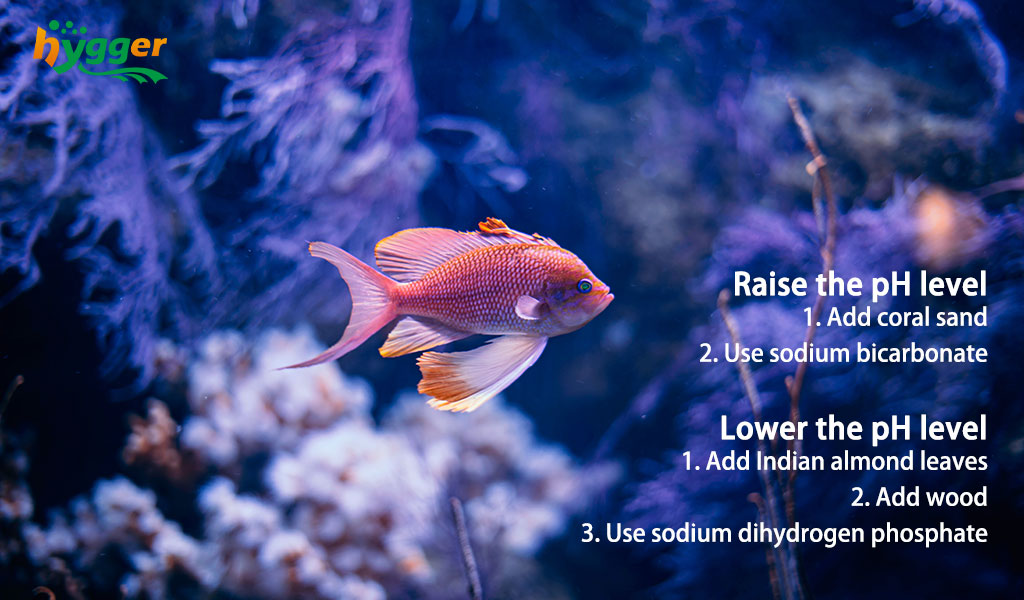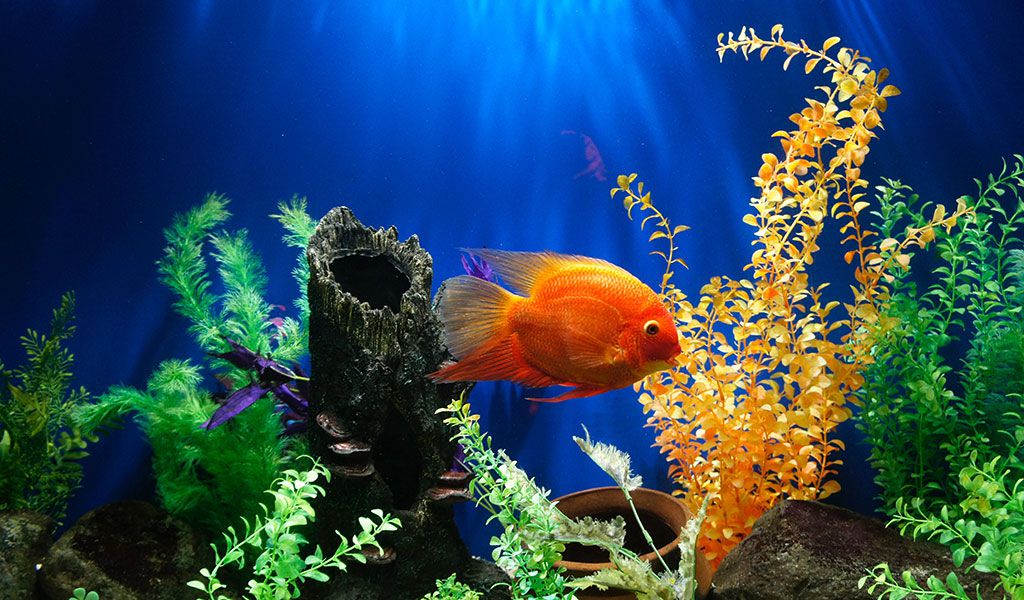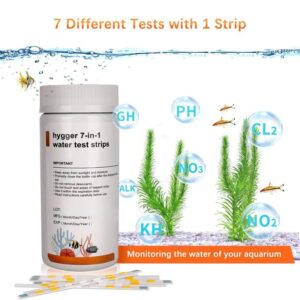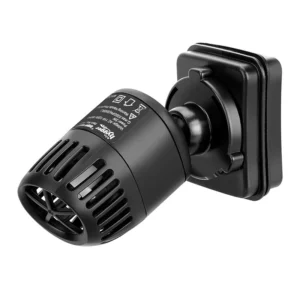When it comes to water quality adjustment in aquariums, some aquarists may be probably overwhelmed. Actually, it mainly includes two aspects – sterilizing the water and adjusting the pH level. In this article, we are going to talk about pH in aquarium water. And you will walk away with a much better understanding of pH level and how to check the pH of water. Also, you will learn ways to test and adjust the pH level in aquarium water.
Content Table
What is pH in aquarium water
Get to know pH in aquarium water
The pH measures the level of acid or alkali in the aquarium water. And it also refers to the concentration of hydrogen ions. In general, the pH level ranges from 0 to 14. 7 stands for neutrality, a level below 7 means acid, and a level above 7 shows alkali.
What does pH do in aquariums?
The pH level in aquariums directly influences the growth and survival of fish or other aquatic pets. Diverse fish species may demand different pH levels, but most fish are fond of slightly alkaline water. Commonly, the pH level that is suitable for ornamental fish can be 6-9. Specifically, most freshwater fish prefer a pH level of 5.5-7.5. While most saltwater fish do best in a pH level of 8.0-8.4. However, the pH level will be affected by fish feces, waste, uneaten food, levels of nitrogen, ammonia, carbon dioxide, etc.
For instance, most freshwater tropical fish fancy a pH level of 6.5 to 7.5. The table below gives you more details about pH water changes in freshwater tropical fish tanks and the effects.
| pH level | Effects |
| Lower than 5.5 | Fish are susceptible to fish disease, especially contagious diseases. Seriously, fish may suffer death. |
| Less than 6.5 /More than 8.5 | Inhibit the growth of microorganisms /Limit the decomposition of putrefactive bacteria /Deteriorate aquarium water quality |
| Below 4 to 5 /above 9.5 to 10 | Fish death |
How to test pH in aquariums
It is crucial to test the pH level once a week or once every two weeks, but how to test water pH? Too low or too high pH levels are detrimental to your aquatic pets.
How to test pH in the aquarium water with a pH strip tester
- The pH meter: It is a piece of electronic aquarium equipment. You can read the pH level fast. But do not forget to change the battery regularly.
- 7-in-1 test strips: They can monitor seven crucial water parameters, including general hardness, total alkalinity, carbonate root, nitrate, nitrite, free chlorine, and pH level.
- 8 in 1 water test kit: It can check eight aquarium water parameters, including hardness, total alkalinity, carbonate root, nitrate, nitrite, total chlorine, pH level, and ammonia nitrogen.
Testing the pH level with water test strips is easy and convenient. Just dip the strip into the aquarium water for 2 seconds, then take it out and wait for 30 seconds. After that, compare the color of the strip to the test strip reading chart.
How to test pH in aquarium water without a kit
Without a water test kit, you can also test the pH level. But it may not so accurate as the reading by the test kit and consumes much time. Actually, you can make a pH-testing solution with the help of red cabbage and a bottle of distilled water. Mix and stir some grated cabbage with boiling distilled water. Then wait for about 30 minutes. After that, remove the cabbage from the water. Next, scoop up some aquarium water and dip some pH-testing solution in the water. As the water color changes, you can read the approximate pH level:
- The pinker the water, the more acid
- Deep purple refers to a pH level of 6
- Blue means the pH level is over 7
- Green indicates a pH level ranging from 10 to 12
How to raise the pH of the water
Fish prefer high pH levels (Alkaline water)
| Freshwater fish | pH level | Saltwater fish | pH level |
| Guppy fish | 7.0-8.0 | Queen angelfish | 8.1-8.4 |
| Platy fish | 7.5-8.5 | Saddle butterflyfish | 8.1-8.4 |
| Molly fish | 7.5-8.5 | Chrysiptera cyanea | 8.0-8.3 |
| Rainbowfish | 7.0-8.0 | Clownfish | 8.0-8.4 |
| Flag fish | 7.0-8.0 | Emperor angelfish | 8.1-8.4 |
Ways to raise the pH level
- Add coral sand
Coral sand is calcareous sand, which consists of calcareous algae, foraminifer, and fragments of echinoderms. It is mainly composed of calcium and magnesium compounds, like calcium carbonate and calcium hydroxide. It produces OH-negative ions in the water, which will raise the pH level and then the aquarium water becomes slightly alkaline. However, adding coral sand can slowly increase the pH level, but it is less harmful to fish.
- Use sodium bicarbonate
Sodium bicarbonate, also called baking soda, can increase the pH level after dissolving in the water. It can adjust the pH level faster than adding coral sand. But you should control the quantity of it. Otherwise, excess sodium bicarbonate would lead to severe fluctuation in pH levels.

How to lower the pH if it is too high
Fish prefer low pH levels (Acid water)
| Freshwater fish | pH level | Freshwater fish | pH level |
| Arowana fish | 6.0-7.0 | Discus fish | 6.0-7.0 |
| Harlequin rasbora | 6.0-7.8 | Freshwater angelfish | 6.8-7.8 |
| Costae tetra | 6.0-7.5 | Clown loach | 6.5-7.5 |
| Silver dollar | 6.5-7.5 | Zebra danio | 6.5-7.5 |
| Neon tetra | 6.8-7.8 | Goldfish | 6.5-7.5 |
Ways to lower the pH level
- Add Indian almond leaves
Indian almond leaves are also named “Terminalia Catappa Leaves” or “Tropical almonds”. As the leaves decay, they will release tannins, oxalic acid, humic acid, and folic acid. The tannins are beneficial to bacteria and fungus inhibition as well as parasite elimination, they help to reduce pH levels. Adding terminalia catappa leaves to shrimp or bettas aquarium is an excellent choice. Generally, you should follow one leaf or two leaves for every 10 gallons of water.
- Add wood
Adding wood can create slightly acidic aquarium water. Plus, you can decorate the wood by tying moss or fern plants. It will greatly increase the ornamental level of your aquariums. While it is also helpful to improve water quality.
- Use sodium dihydrogen phosphate
Sodium dihydrogen phosphate is a colorless crystal or white crystalline powder. After dissolving in the water, the pH level will be decreased.
Key takeaways
The pH level is closely related to fish growth. Hence, it is recommended to test the pH level before introducing new fish to your tank or after changing aquarium water. You should check whether the pH level in your tank is suitable for fish or other aquatic pets to grow or breed.
Know more about aquarium water
If you want to learn more about aquarium water, you can go to:



Leave a comment